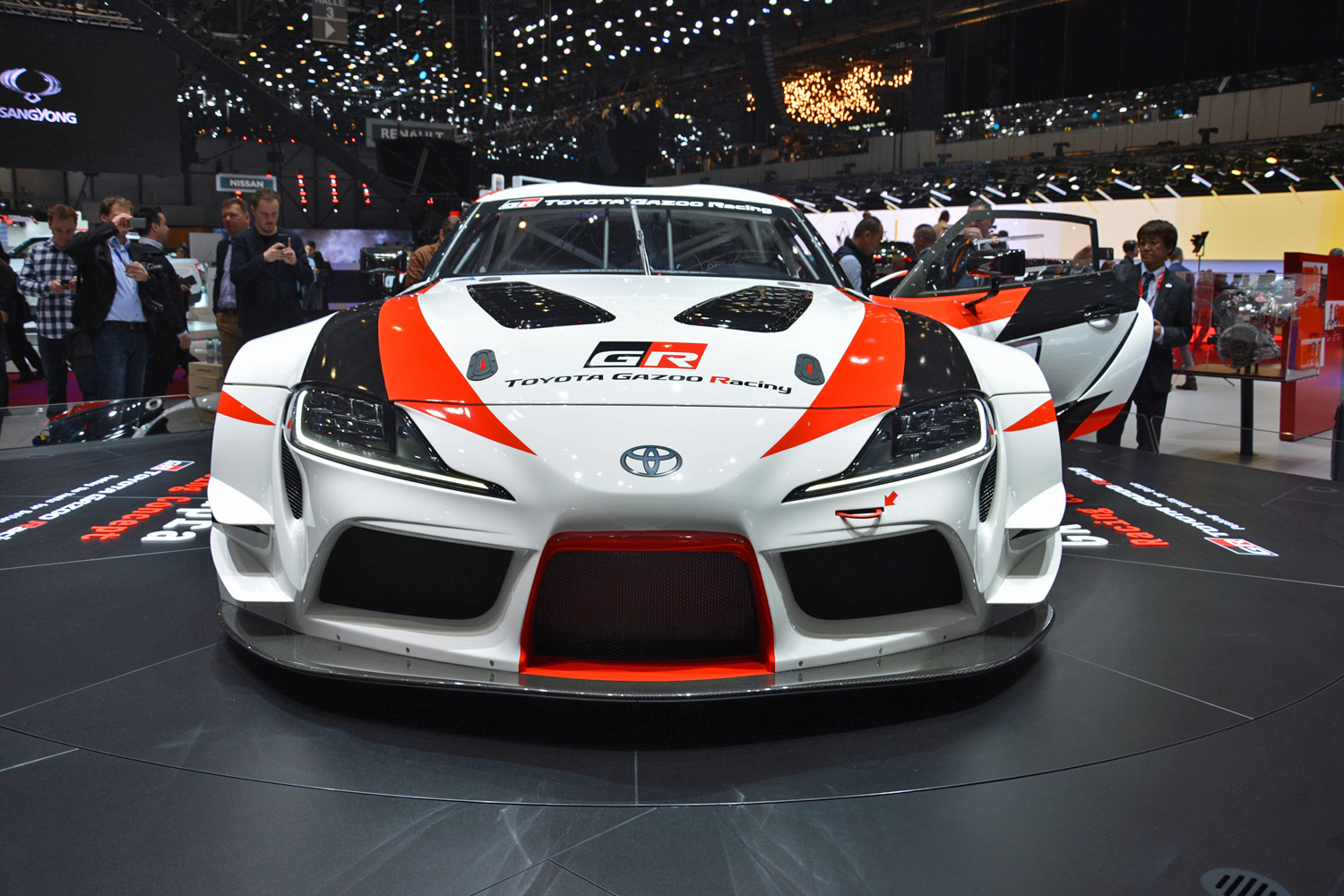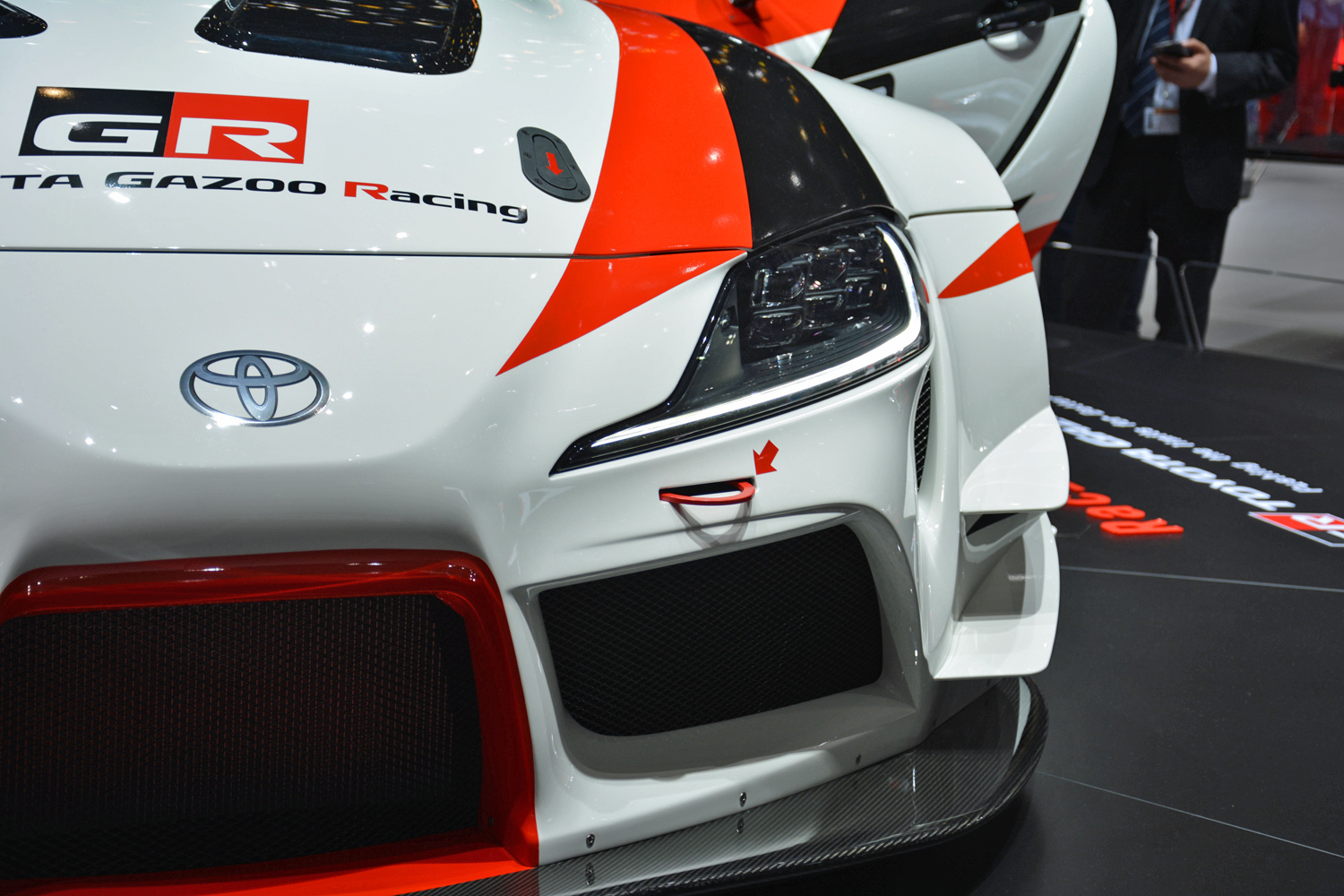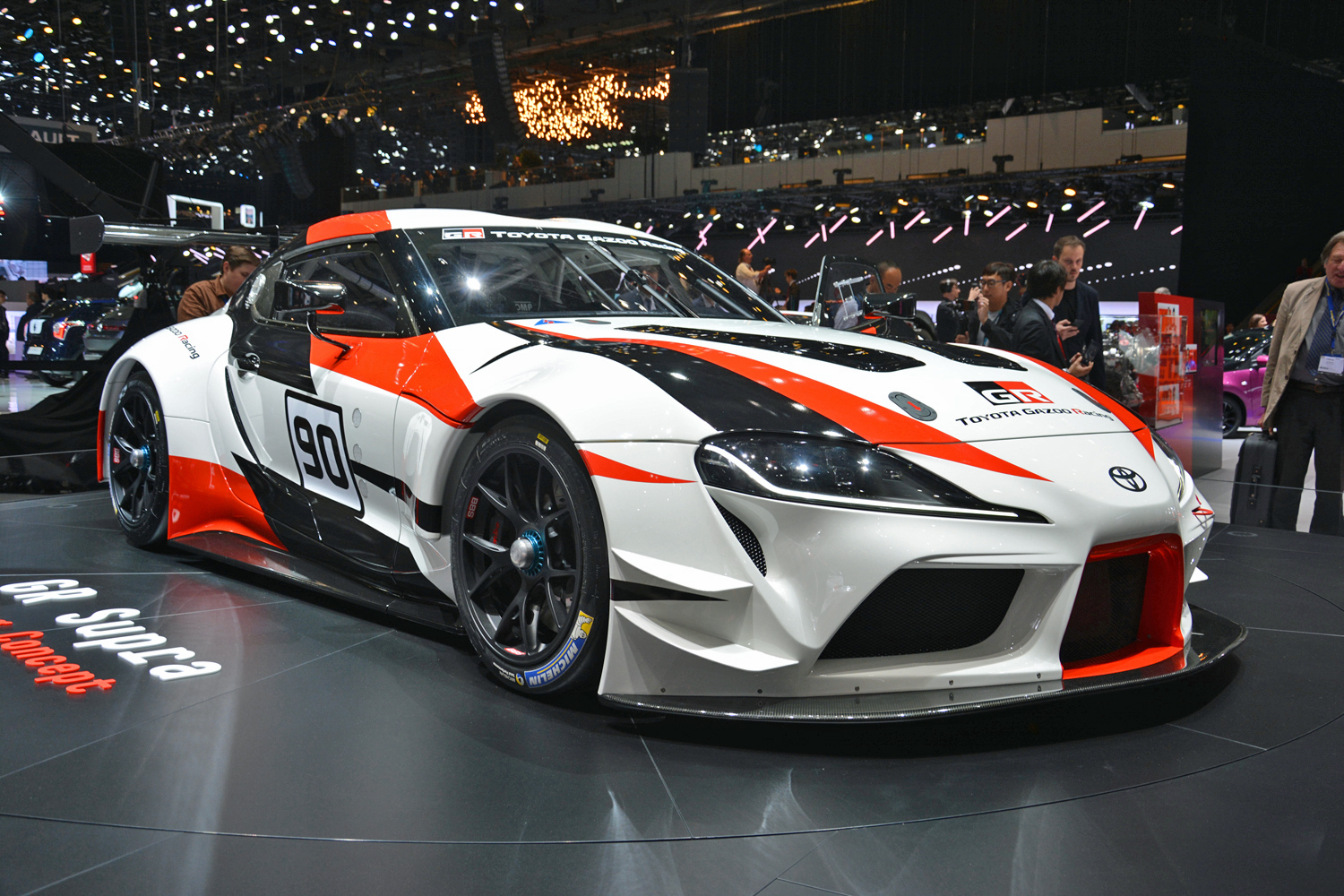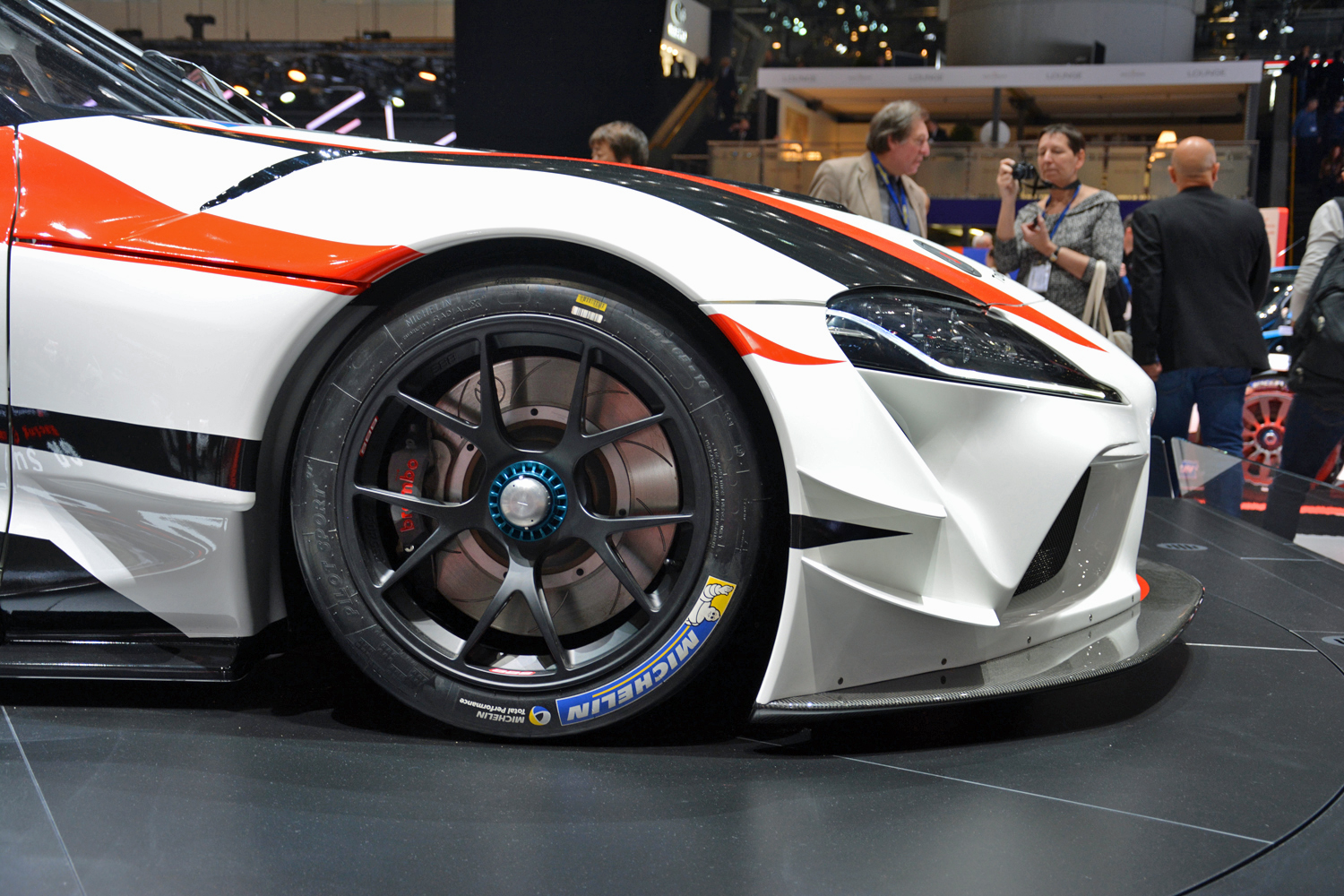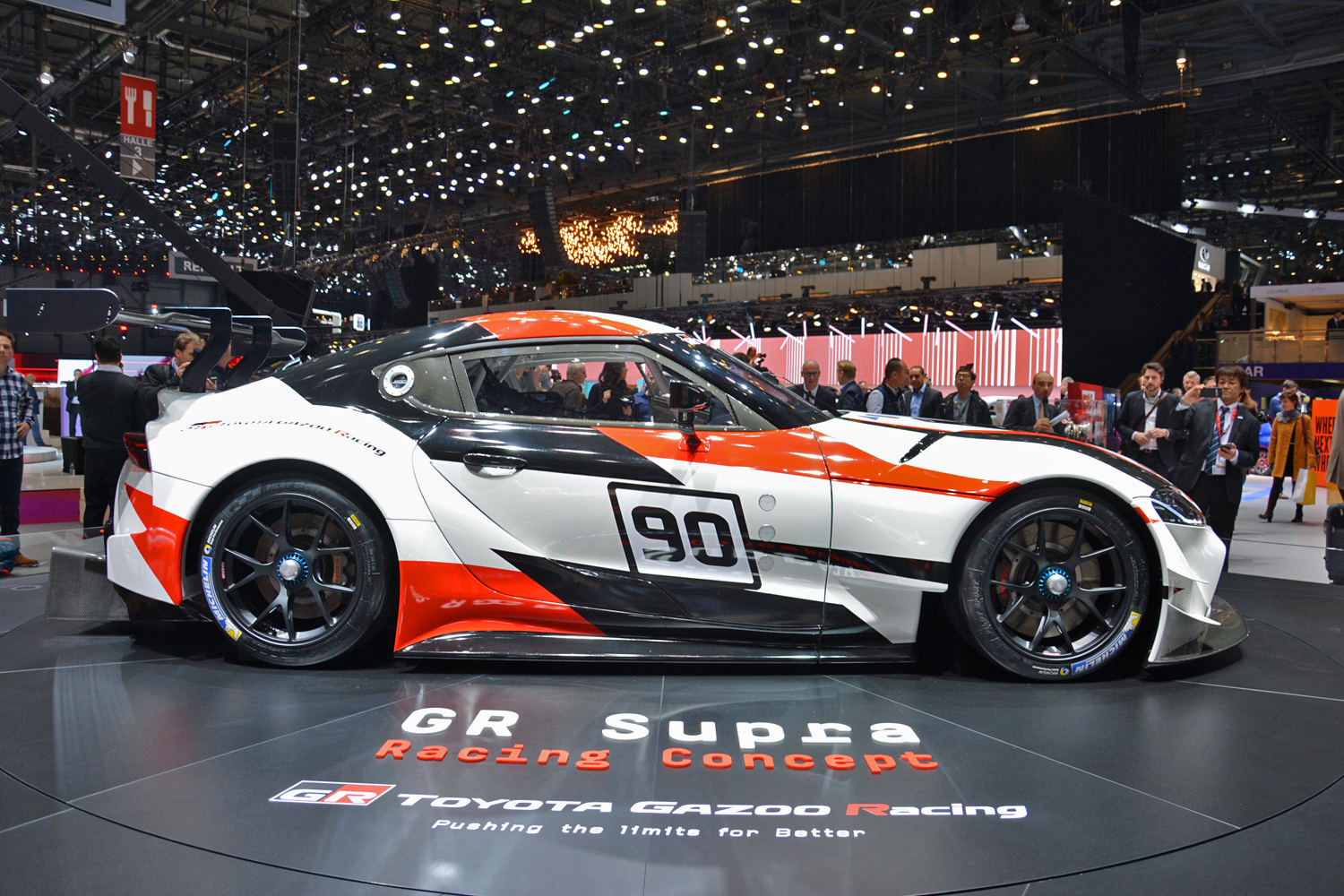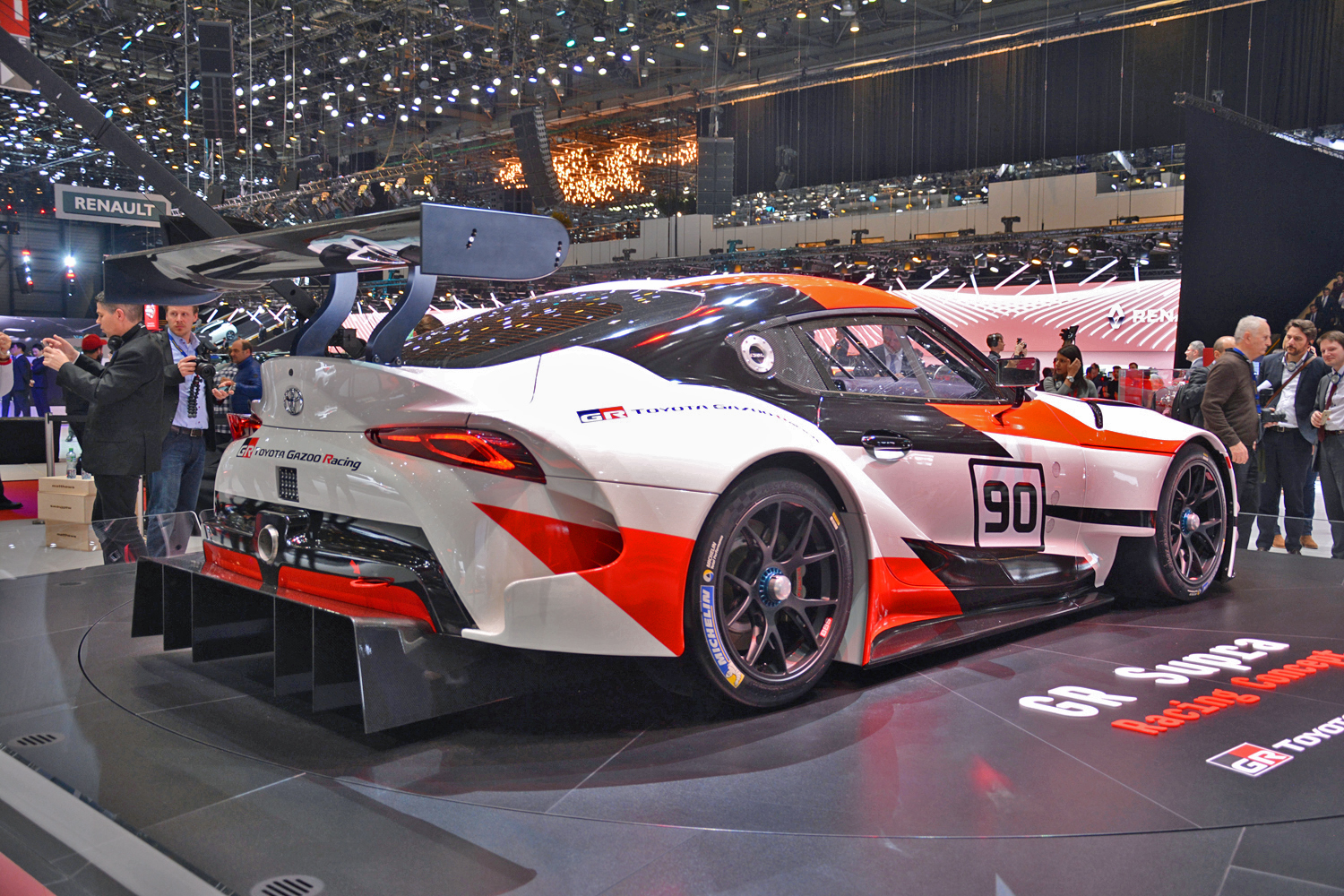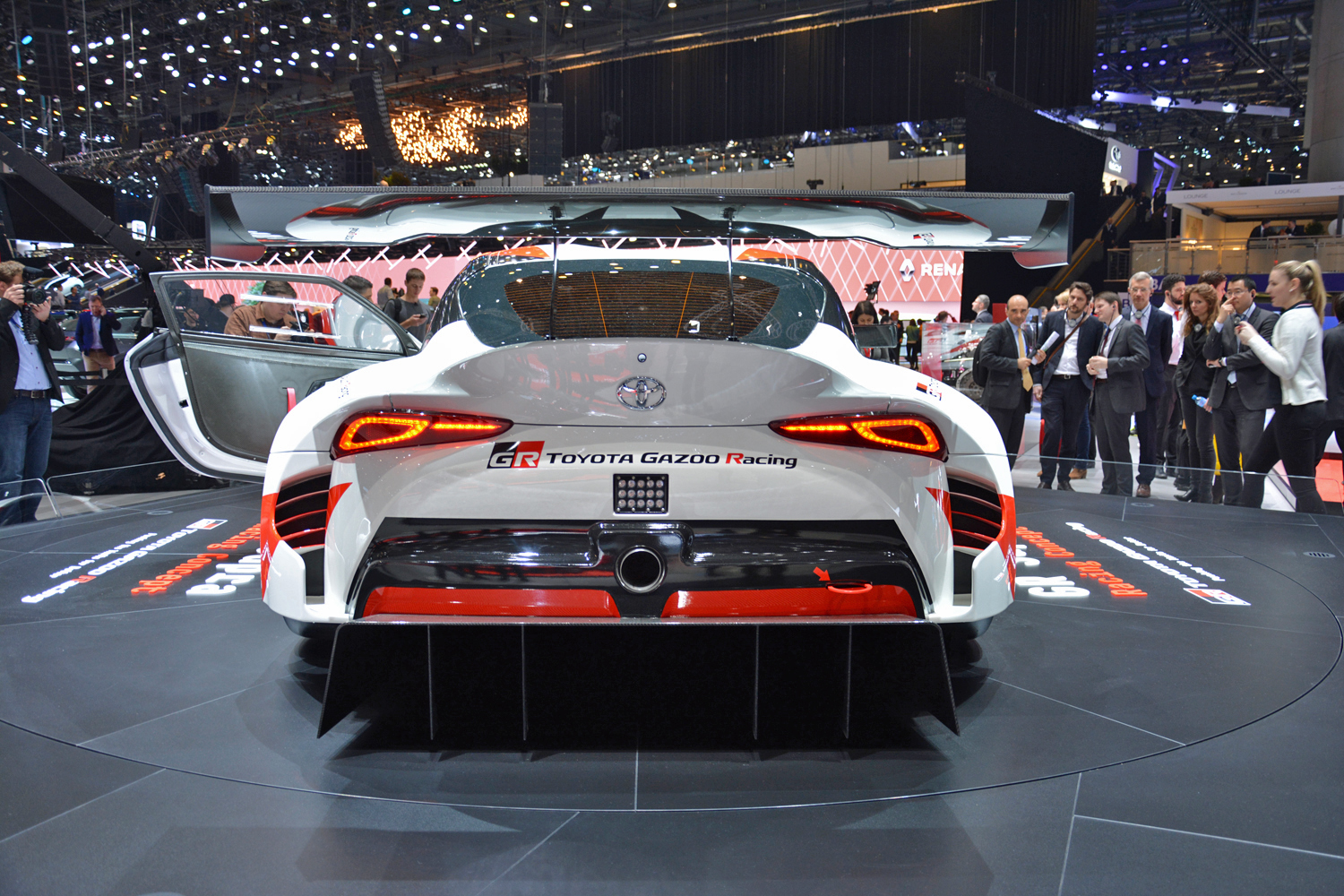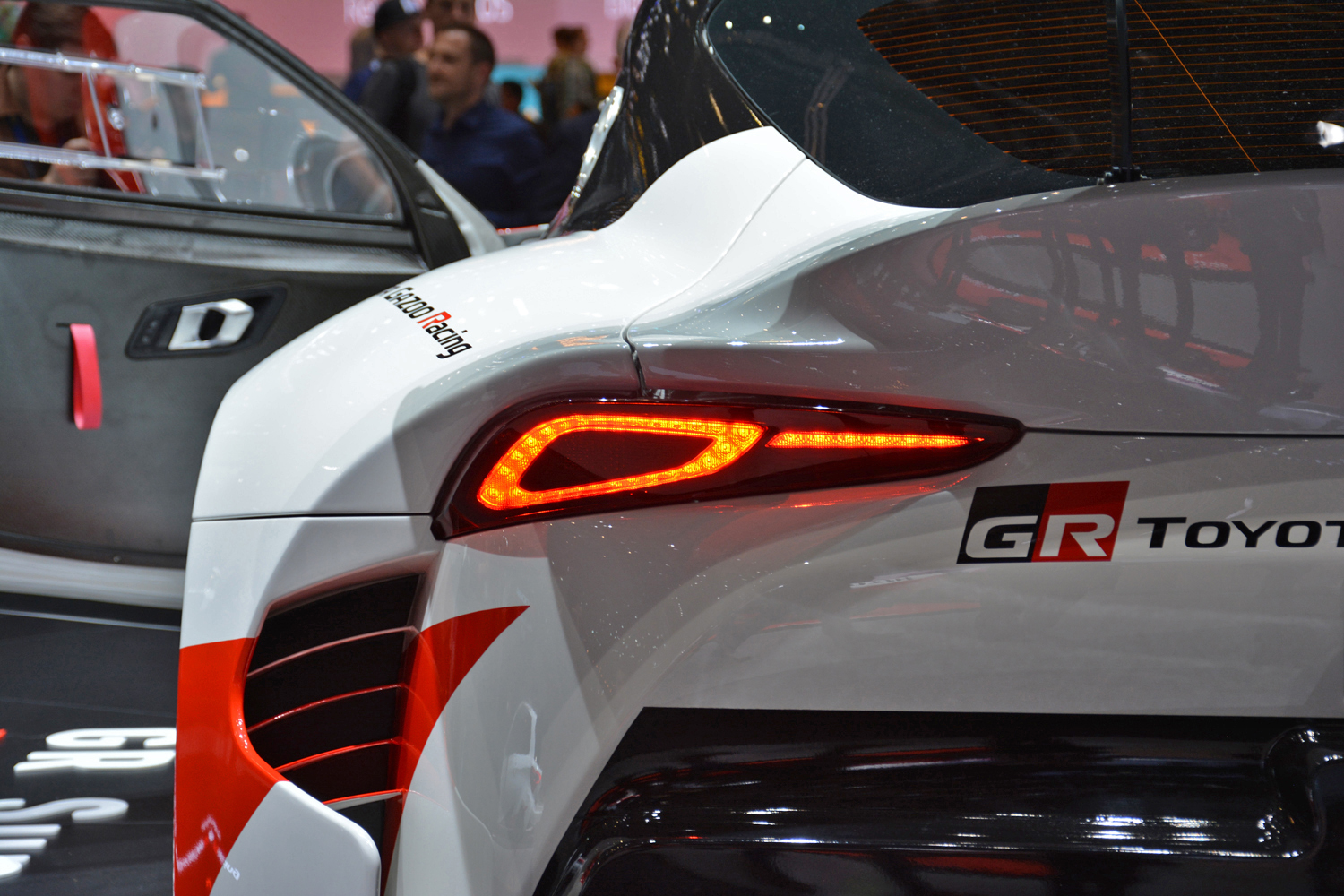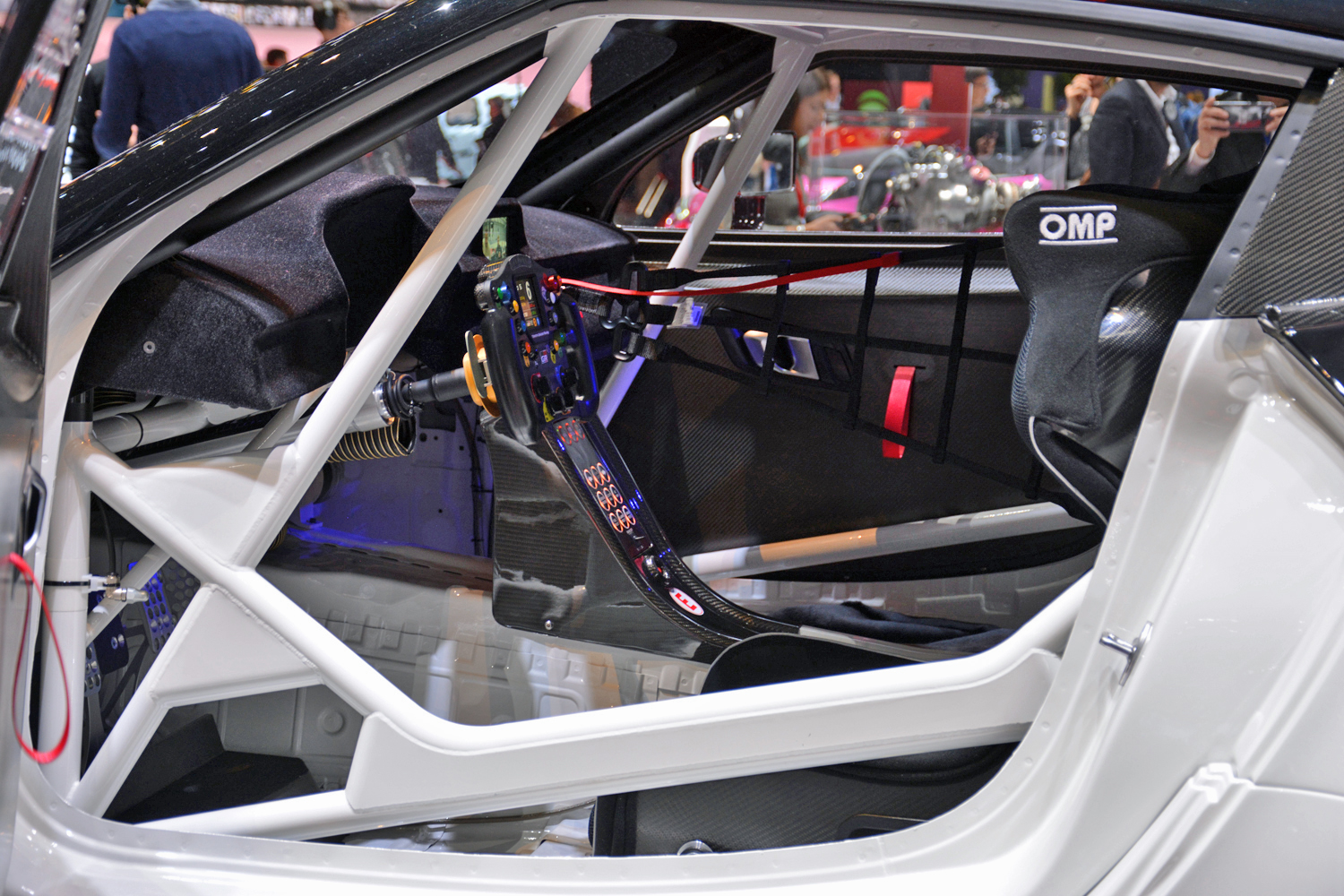If you thought 12 years was an inexcusably long waiting period between the first and second generation Honda/Acura NSX, then the Toyota Supra and its 16-year hiatus is just sinful.
Since the Supra assembly line powered down in 2002, enthusiasts have conjured rumors about a successor. Some said the new model would be powered by the biggest turbocharger known to man, others said electric motors would be part of the mix, and the rest hadn’t a clue what was coming – they just knew it would be good.
Today, at the 2018 Geneva Motor Show, all our questions were answered.
That was a cruel joke – sorry. No, we didn’t get to see the new Supra or learn everything about its construction. However, we did get our best look yet at the all-new sports car and rekindled our hopes that a production model would come very soon.
The Toyota GR (Gazoo Racing) Supra Concept shown at Geneva is a stripped down racing model that will make it digital debut in Gran Turismo Sport next month and may someday compete in motorsports series. Gazoo Racing, for those unfamiliar, is Toyota’s motorsport division responsible with the Japanese automaker’s recent exploits in Le Mans and World Rally Championship (WRC).
Here’s what we know of the Supra Concept: it is 180 inches long, 80.6 inches wide, 48.4 inches tall and has a wheelbase of 97.2 inches. The rear-drive racer uses composite materials for the bumpers, hood, front splitter, rear diffuser, side skirts, door mirrors and the rear wing. BBS wheels are wrapped in Michelin tires and house Brembo brakes. Inside, a roll cage, single racing bucket seat, and quick-release steering wheel are the only “conveniences.”
What we don’t know is what will power the production car, how much it will weigh, how much it will cost, and (frustratingly) when we’ll see it. The road-going model will be built in conjunction with BMW’s next generation Z4 sports car, so any news about that car is news about the Supra.
All this to say, the wait continues. Until the prophesized date of a new Supra comes, use your imagination to strip away the GR Concept’s flared fenders – there’s a consumer car under there somewhere.
